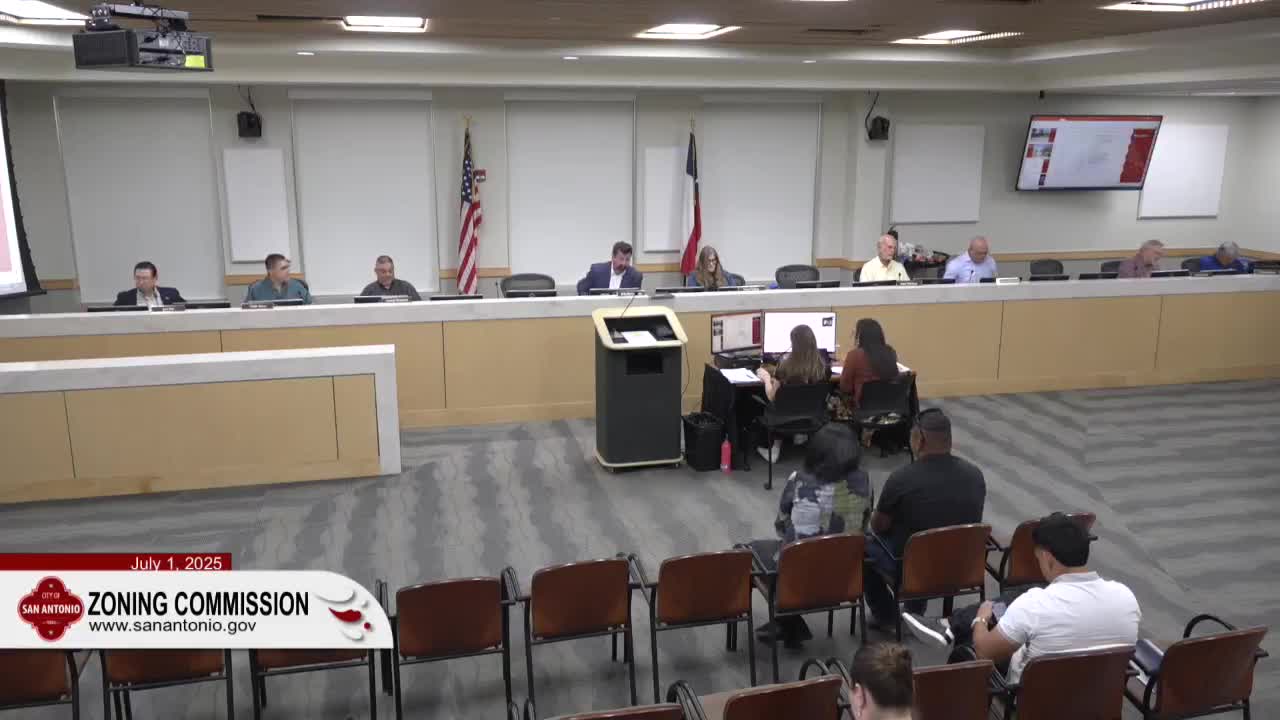Alex Cruz proposes duplex conversion for vacant Burnett Street property amid community concerns
July 01, 2025 | San Antonio, Bexar County, Texas
This article was created by AI summarizing key points discussed. AI makes mistakes, so for full details and context, please refer to the video of the full meeting. Please report any errors so we can fix them. Report an error »

In the heart of San Antonio, the Zoning Commission convened on July 1, 2025, to discuss a pivotal case that could reshape a neighborhood. The meeting, held under the bright lights of city hall, focused on a proposal to rezone a property at 1511 Burnett Street from a single-family residential district to a mixed residential district. This change, if approved, would allow for the construction of a duplex, a move aimed at addressing the growing demand for diverse housing options in the area.
The proposal drew attention not only for its potential impact on housing availability but also for the community's response. Out of 45 notices sent to nearby residents, none expressed support or opposition, yet the Harvard Place East Lawn Neighborhood Association voiced its disapproval. Despite this, city staff indicated that the proposed zoning aligns with the established development patterns and the strategic housing implementation plan, which advocates for varied housing types to accommodate a diverse population.
Alex Cruz, the applicant, presented his vision for the property, emphasizing the need for more housing in the area. He explained that the plan involves rehabilitating the existing structure rather than demolishing it, with the intention of creating two attached units. However, his efforts to engage with the neighborhood association faced challenges, as attempts to schedule a meeting were met with delays, raising concerns among commissioners about community outreach.
Commissioner Watson highlighted the importance of communication with local residents, expressing apprehension over the lack of engagement. Cruz acknowledged the difficulties but pointed out the urgency of addressing safety issues related to the vacant property, which has been a target for trespassing and break-ins.
As the discussion unfolded, it became clear that this case is not just about zoning; it reflects broader themes of community involvement, housing needs, and urban development in San Antonio. The commission's recommendation will ultimately be forwarded to the city council, which holds the final decision-making power. The outcome of this case could set a precedent for future developments in the area, making it a focal point for both residents and city officials in the months to come.
The proposal drew attention not only for its potential impact on housing availability but also for the community's response. Out of 45 notices sent to nearby residents, none expressed support or opposition, yet the Harvard Place East Lawn Neighborhood Association voiced its disapproval. Despite this, city staff indicated that the proposed zoning aligns with the established development patterns and the strategic housing implementation plan, which advocates for varied housing types to accommodate a diverse population.
Alex Cruz, the applicant, presented his vision for the property, emphasizing the need for more housing in the area. He explained that the plan involves rehabilitating the existing structure rather than demolishing it, with the intention of creating two attached units. However, his efforts to engage with the neighborhood association faced challenges, as attempts to schedule a meeting were met with delays, raising concerns among commissioners about community outreach.
Commissioner Watson highlighted the importance of communication with local residents, expressing apprehension over the lack of engagement. Cruz acknowledged the difficulties but pointed out the urgency of addressing safety issues related to the vacant property, which has been a target for trespassing and break-ins.
As the discussion unfolded, it became clear that this case is not just about zoning; it reflects broader themes of community involvement, housing needs, and urban development in San Antonio. The commission's recommendation will ultimately be forwarded to the city council, which holds the final decision-making power. The outcome of this case could set a precedent for future developments in the area, making it a focal point for both residents and city officials in the months to come.
View full meeting
This article is based on a recent meeting—watch the full video and explore the complete transcript for deeper insights into the discussion.
View full meeting
